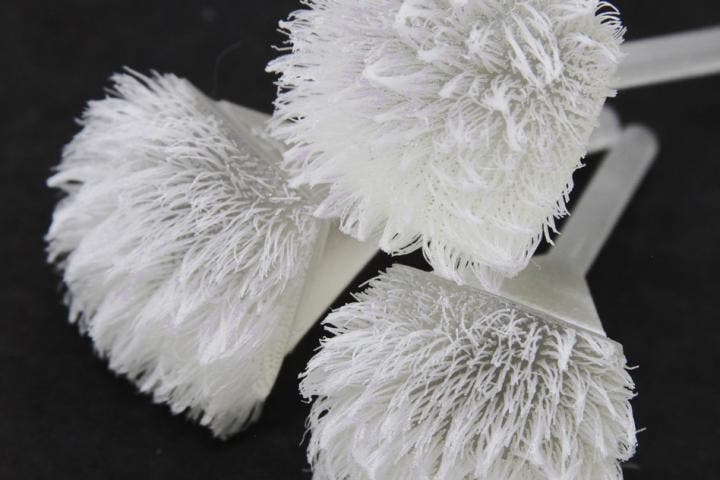With fur and brushes, a team of researchers is opening a new chapter for 3D printing – a rather hairy one.
By now, it seems that 3D printing can do pretty much everything. It can create a car, revolutionize prosthetics, even create better ceramics. But there was one field in which 3D printing was just shy to explore: things with very fine elements, like brushes or fur.
The main problem in this case isn’t the printing itself, but rather the required processing power. Computation time can be huge when it comes to fine details, and the power demand is also considerable. Now, researchers at MIT’s Media Lab have found a way to bypass a major design step in 3-D printing, creating efficient models and printing thousands of hair-like structures.
The main innovation was giving up on conventional computer-aided design (CAD) software to draw thousands of individual hairs on a computer, a process which would take hours to compute, instead building a different software platform.
Their new platform, “Cilllia,” lets users define the angle, thickness, density, and height of thousands of hairs, in just a few minutes. They used it to design arrays of hair-like structures with a resolution of 50 microns — about the width of a human hair. They toyed around with the size, demonstrating that their solution has the flexibility to create arrays ranging from coarse bristles to fine fur, onto flat and also curved surfaces, and all this using a conventional 3D printer.
Jifei Ou, a graduate student in media arts and sciences and the lead author of the new paper, was thrilled.
“It’s very inspiring to see how these structures occur in nature and how they can achieve different functions,” Ou says. “We’re just trying to think how can we fully utilize the potential of 3-D printing, and create new functional materials whose properties are easily tunable and controllable.”
The technique itself is not extremely complicated. The hairs are simply designed as cones, with fewer and fewer pixels the higher you go. To change the hair’s dimensions, such as its height, angle, and width, you simply change the distribution of the pixels. This also makes the whole thing much more scalable.
After this step was done, printing the hairs on a flat surface was quite easy, but printing on curved surfaces proved much trickier. That obstacle too was overcome.
“With our method, everything becomes smooth and fast,” Ou says. “Previously it was virtually impossible, because who’s going to take a whole day to render a whole furry rabbit, and then take another day to make it printable?”
The potential applications are considerable, ranging from toys to sensors. The team demonstrated the former by creating a toy rabbit, but the latter is probably more interesting.
“The ability to fabricate customized hair-like structures not only expands the library of 3-D-printable shapes, but also enables us to design alternative actuators and sensors,” the authors conclude in their paper. “3-D-printed hair can be used for designing everyday interactive objects.”










